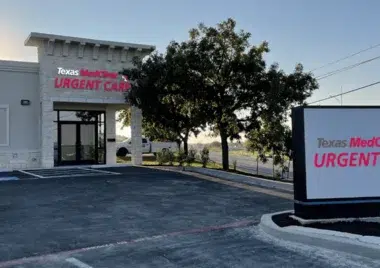Professional Guidance on Navigating Clinic Options for Urgent Care
Professional Guidance on Navigating Clinic Options for Urgent Care
Blog Article
How Urgent Care Clinics Enhance Access to Health Care for Sufferers With Immediate however Non-Emergent Medical Requirements
Immediate treatment facilities have actually emerged as a vital component in the healthcare landscape, addressing the demands of people that need immediate attention for non-emergent problems. By operating outside of traditional workplace hours and using a streamlined approach to small injuries and ailments, these centers not only decrease the burden on emergency situation divisions but also boost general client accessibility to prompt care. As we take into consideration the effects of this design, it ends up being important to examine how immediate care facilities are changing client experiences and end results in manner ins which warrant more exploration.
Duty of Urgent Care Clinics
Urgent treatment clinics play a crucial duty in the health care system by providing immediate and easily accessible medical solutions for non-life-threatening conditions. These centers function as an essential bridge in between primary treatment suppliers and emergency divisions, effectively easing the burden on hospitals while making certain clients obtain timely treatment. By operating expanded hours, including weekend breaks and evenings, urgent care facilities satisfy people who might not have the versatility to see a conventional medical professional's office throughout conventional organization hours.
The spectrum of solutions offered at immediate treatment clinics includes therapy for minor injuries, diseases, and diagnostic services such as X-rays and research laboratory tests. This breadth of care permits clients to resolve a variety of health problems without the long haul times generally associated with emergency clinic. Furthermore, immediate treatment facilities typically utilize a diverse group of health care experts, including doctors, registered nurse experts, and medical professional aides, that are furnished to deal with various medical situations.
Advantages of Immediate Gain Access To

Additionally, prompt accessibility reduces the worry on medical care companies and emergency departments by diverting less crucial situations to suitable settings. This reduces overcrowding in emergency rooms, allowing those with real emergency situations to get the urgent care they require without unneeded delays.
Furthermore, the convenience of extensive hours and walk-in schedule suggests that people can look for treatment without the requirement for visits, which is particularly beneficial for people with unforeseeable schedules or those that may experience sudden wellness problems. - Urgent Care
The accessibility of immediate care clinics cultivates a positive method to wellness, motivating clients to look for medical advice and therapy quicker instead of later. This not just enhances person fulfillment but additionally promotes a society of precautionary treatment, inevitably causing much healthier areas.
Comparison With Emergency Areas
Often, people locate themselves unclear whether to visit an immediate care clinic or an emergency situation room when faced with a medical concern. Urgent Care. Recognizing the distinctions between these 2 healthcare options is important for making educated choices. Urgent care facilities are designed to deal with non-emergent however instant clinical concerns, such as minor injuries, infections, or health problems. They typically operate with prolonged hours, consisting of nights and weekends, supplying prompt accessibility for patients who may not need the thorough services of a healthcare facility.
In comparison, emergency situation spaces are furnished to manage serious scenarios and extreme clinical emergency situations, such as cardiovascular disease, strokes, or major trauma. These facilities supply innovative analysis devices and expert examinations, which can cause longer wait times for clients with less essential concerns. Typically, emergency clinic tend to be extra pricey than urgent care facilities, making immediate care an extra cost-efficient choice for non-emergent needs.
Ultimately, while both immediate care clinics and emergency situation spaces play important roles in the medical care system, comprehending their respective features enables clients to pick the proper setting based upon the urgency and nature of their clinical issues.
Providers Used by Urgent Care
Immediate treatment centers provide a large array of solutions tailored to attend to non-emergent medical demands, making them a convenient alternative for patients looking for prompt interest. These centers are geared up to manage numerous conditions, consisting of small cracks, sprains, and lacerations, which need immediate treatment but do not require emergency space treatment.
Additionally, immediate treatment clinics use analysis services such as X-rays and lab examinations, enabling quicker evaluation and therapy of illnesses. Individuals usually present with typical disorders like colds, influenza, and infections, which can be efficiently handled on-site. In addition, urgent care centers regularly provide preventive services, consisting of inoculations and wellness screenings, contributing to overall public health and wellness.
An additional key service offered is the management of chronic conditions intensified by severe signs, such as asthma or diabetic issues, making sure individuals get prompt care without overwhelming emergency services. Many clinics also extend their hours beyond traditional workplace timetables, boosting access for people that click for source may need care during weekend breaks or nights.
Improving Client Results

Immediate care clinics are equipped to take care of a variety of non-emergent clinical problems, including small injuries, infections, and health problems. Their emphasis on available, top quality care permits individuals to receive preventative services and ideal treatments, fostering far better health and wellness management. In addition, these centers frequently use a multidisciplinary technique, integrating numerous health care professionals to make sure extensive treatment.
Client education is likewise a key component of improving end results. Urgent treatment service providers regularly provide read this advice on follow-up care, preventative measures, and way of life alterations, empowering individuals to take an active role in their health and wellness. Consequently, the combination of instant accessibility, expert care, and person education not only improves contentment but likewise brings about improved lasting health results, strengthening the worth of immediate treatment clinics in the healthcare continuum.
Final Thought
In recap, urgent care centers serve an essential function in enhancing medical care gain have a peek at this website access to for patients with instant, non-emergent medical demands. Eventually, immediate care centers are vital in bridging the void between key care and emergency situation services, making sure available and reliable health care for areas.
On average, emergency situation rooms often tend to be more costly than urgent care facilities, making urgent treatment a more economical option for non-emergent requirements. (Urgent Care)

Inevitably, urgent care facilities are vital in linking the void in between primary care and emergency services, making certain available and reliable healthcare for neighborhoods.
Report this page